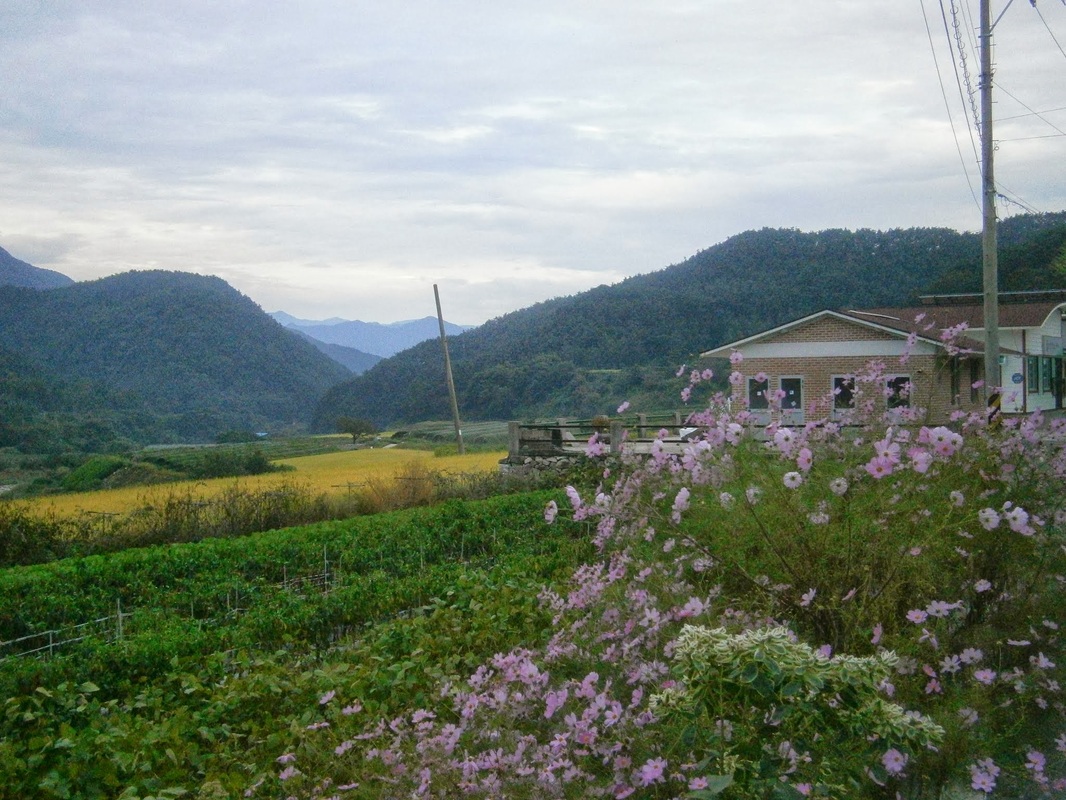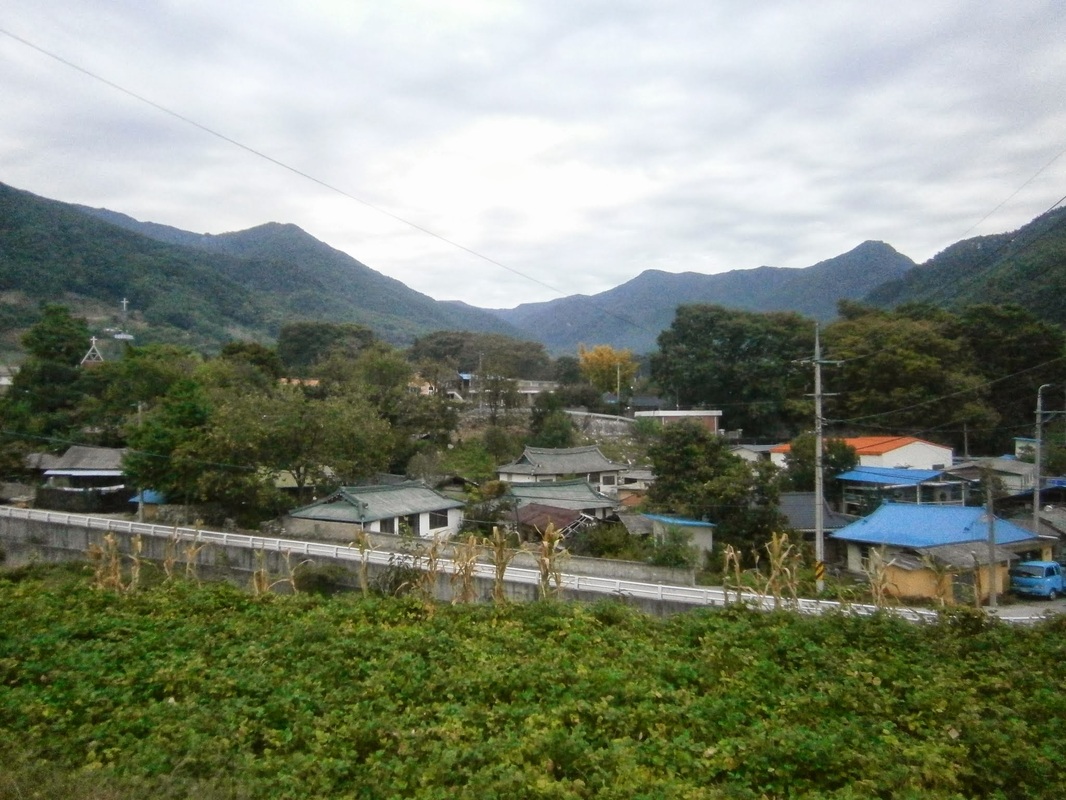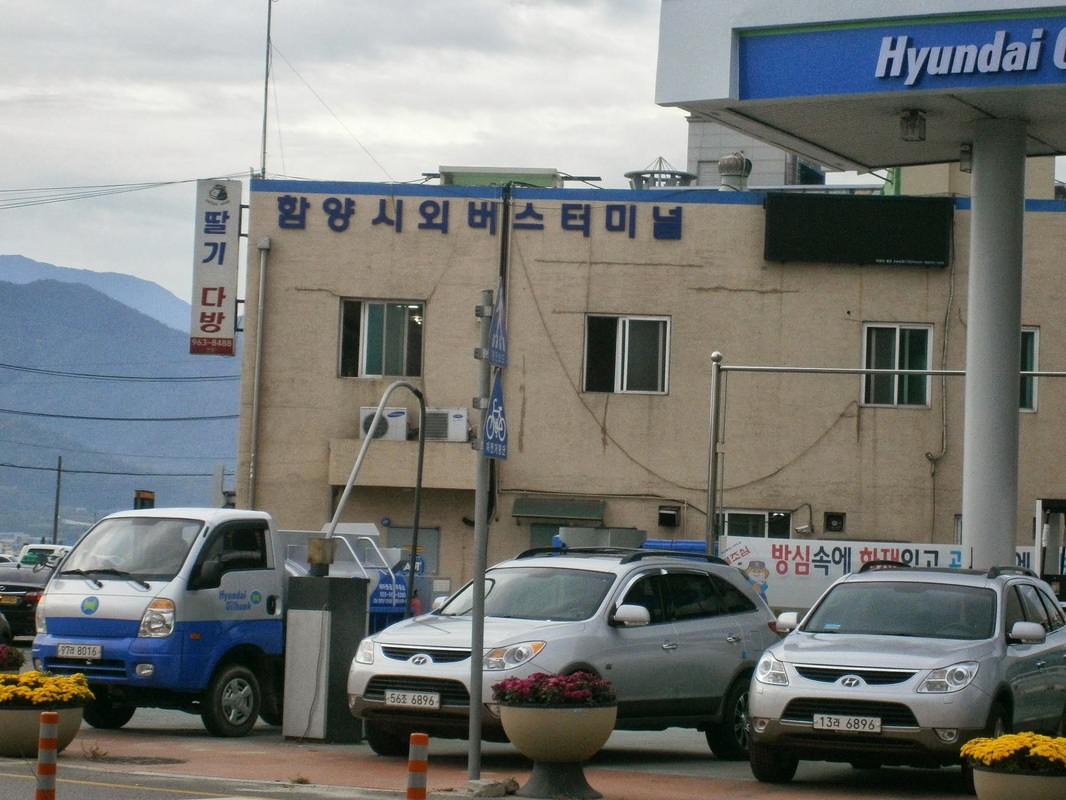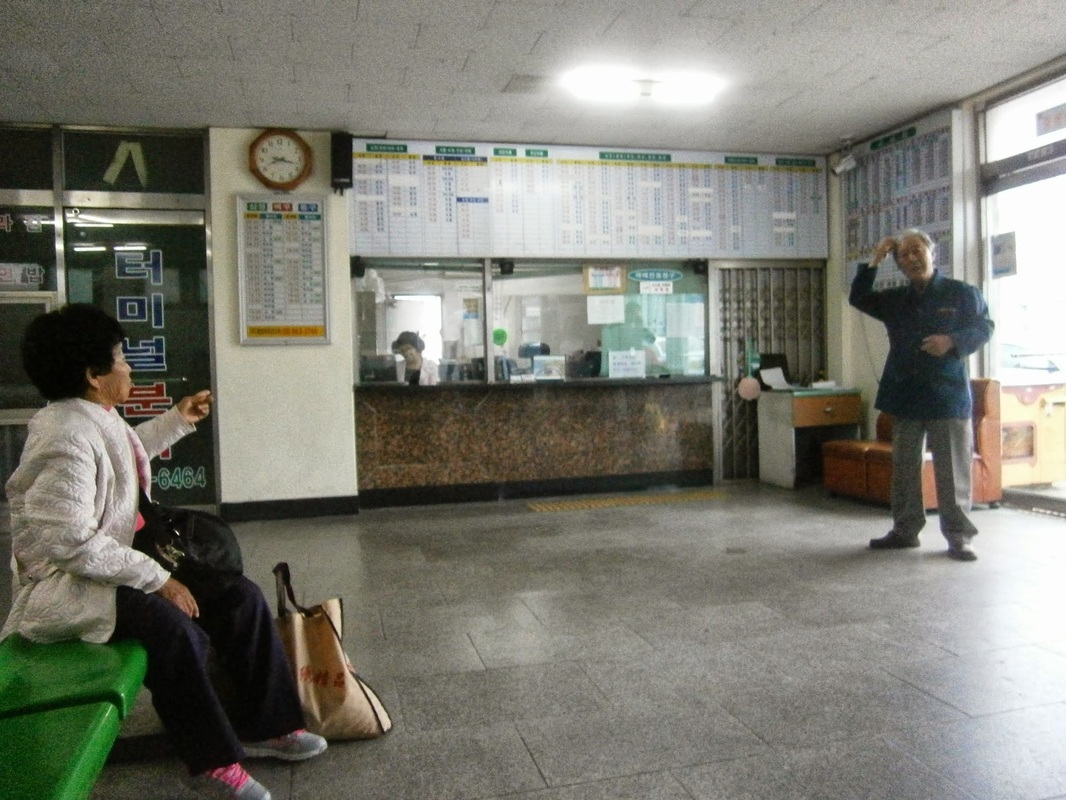Here is a picture I took Saturday, Hamyang County [함양군], Baekjeon District [백전면], Unsan Village [운산리].

A house in Unsan Village
I caught the bus from near this spot in Unsan-ri to Hamyang Bus Terminal at about 7:10 AM. There were no marked bus stops anywhere in Unsan Village, causing me confusion. A Korean man, in his 50s or 60s, with an old-style hat was out for a walk that morning. I tried to ask where the bus stop was. He answered with the Korean version of “Huh?” , so I repeated slowly. “Buh-seuh”. He got it that time. The man seemed to say that the bus would be coming around such and such a place in a few minutes and turning, and so I should just wait in the intersection and wave it down, not that I understand most of his words, but I think that was about it. I thanked him and he walked away, and the bus was already visible in the distance, winding its way towards us. The man’s suggested method is exactly the one I used to get on the bus, and so began my ride away from Unsan Village.

The core of Unsan Village (of Hamyang County, Gyeonsang Province, South Korea) / September 2013
[운산리, 백전면, 함양군, 경상도]
Note the church on the left. I once had the idea that Christianity was mostly urban/urbane in South Korea, with rural people being more Buddhist or something, but small towns and villages also have their own churches. In the small city of Hamyang, I later saw several churches, and one woman even handed me a church leaflet and small free gift (a very typical thing to happen in the Seoul area). I didn’t see a comparable Buddhist icon in the village.
Speaking of Buddhists, the bus driver was a bit fat, quite bald, and had a round Buddha-like head. His voice surprised me; it was a baritone radio-announcer voice. This baritone Buddha bus-driver was involved in a conversation at length, for most of the forty minutes from when I got on to when she got off near Hamyang City, with a woman passenger who sat in the front seat.
I was surprised to see that the bus already had about six passengers when I got on, because I knew from my trail guidebook that there was only one stop before mine, at Junggi Hamlet [중기마을] to the west of Unsan and at the very end of the county road. Mountains were all around it. That hamlet is near Jung-jae Pass [중재 or 중치], the place I had emerged from the mountains the day before.
The bus ride cost 2,000 Won ($1,85). Only cash was accepted. There seemed to be a machine for reading electronic cards, but nobody, of the two dozen or more who got on and off, used it. It must have been just for show!
Of the other passengers, all but two were elderly or nearly so. Many seemed to know each other, of course. I think the bus passed through the districts of Baekjeon and Byeonggok (백전면, 병곡면), the total population of both being 3,000 according to Korean Wikipedia. I presume many or most of these riders have been living there since birth.
People got off almost wherever they wanted; they’d just ask the driver and he’d stop. Most were “going to town” to take care of some business or other, and got off in the city. I got out at the County Bus Terminal (시내터미널), close to the Intercity Bus Terminal (시외터미널). Here is the Intercity Bus Terminal, looking very North Korean:

Hamyang Intercity Bus Terminal
Here is a shot of the inside of the Intercity Bus Station, with characteristically-elderly people loitering. I think the man standing was some kind of station manager.

The Inside of Hamyang Intercity Bus Terminal
I was in Hamyang.




